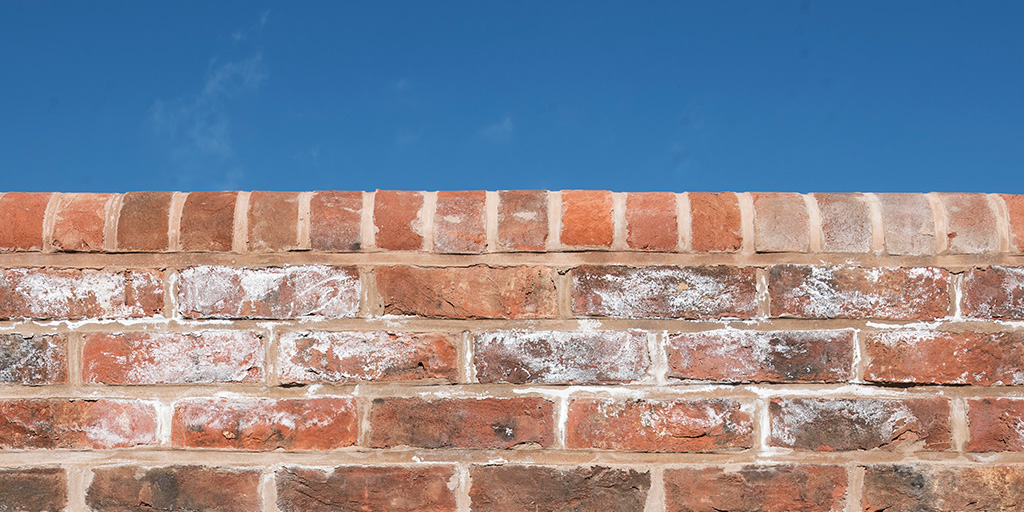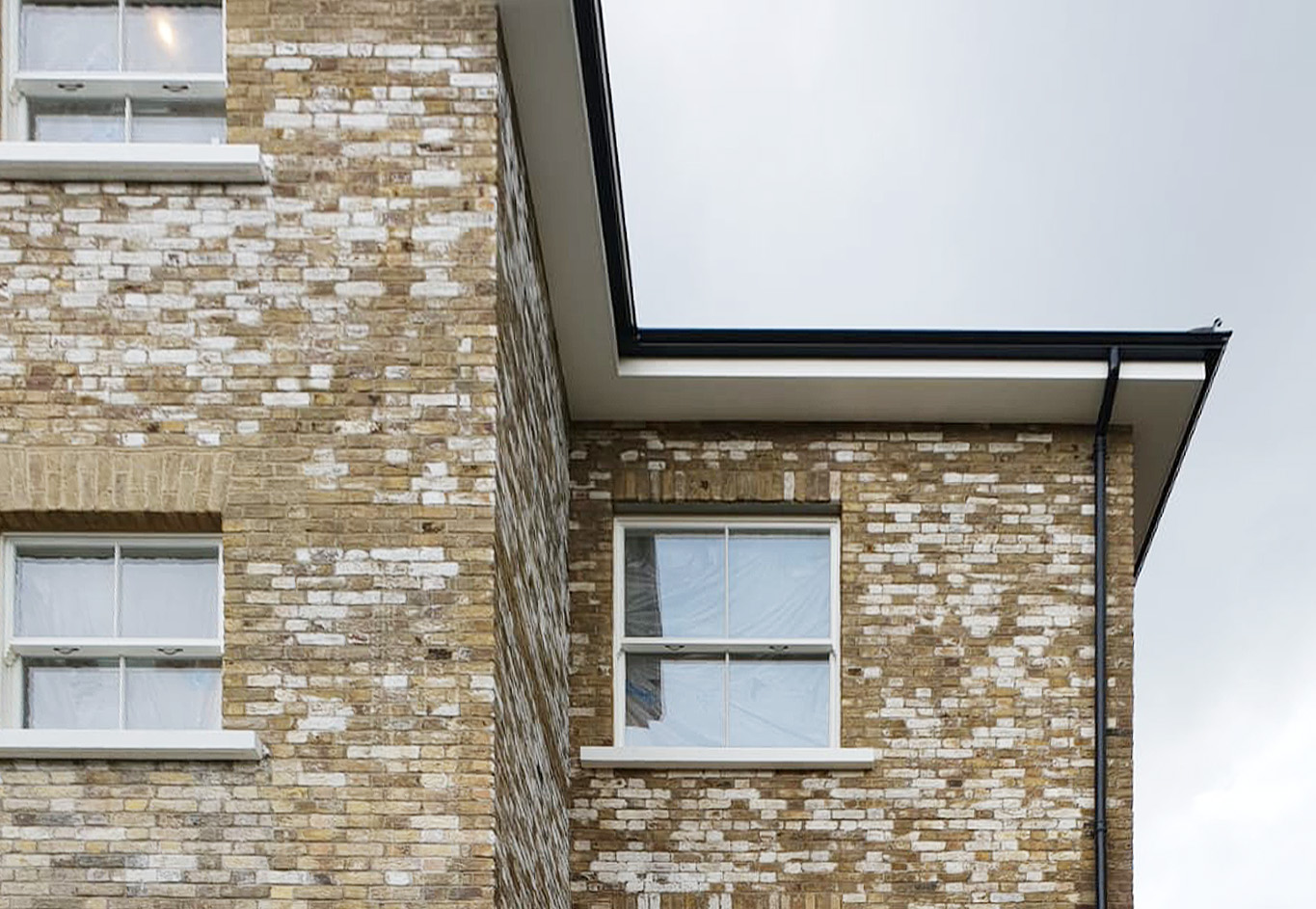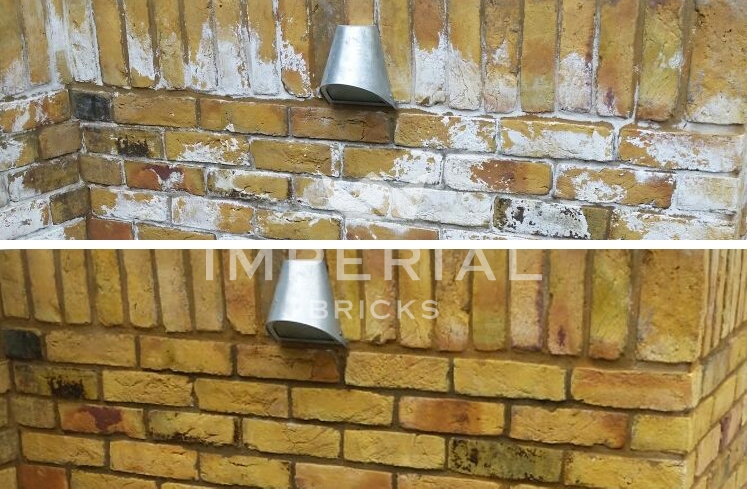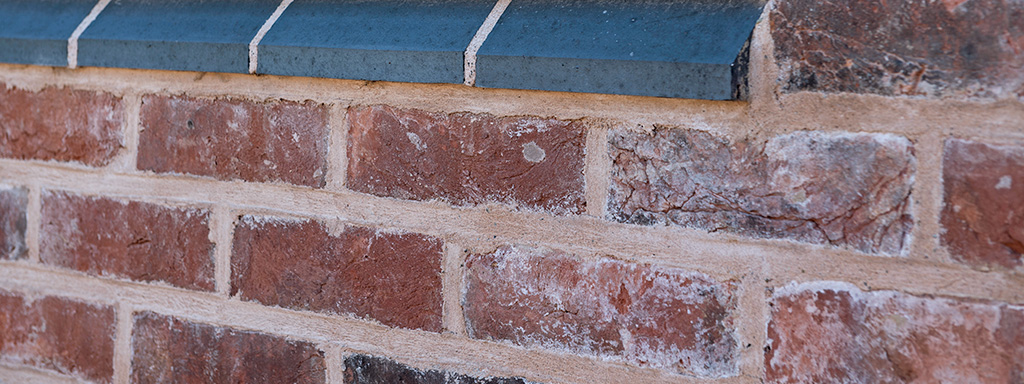
There are many things to consider when choosing clay bricks for your building project. Being one of the first things you see and one of the materials you cannot easily change in the future, the type, colour, texture and finish of the bricks will be at the forefront of your mind.
Sourcing good quality bricks from a reputable supplier or manufacturer is essential, however there is one unwanted aesthetic that you may not be aware of until it presents itself – efflorescence.
Have you ever seen a building and noticed that the bricks have almost turned white, or have what appears to be white, sporadic staining on them? That’s efflorescence.
Efflorescence is the deposit of crystalline salts on the surface of brickwork or mortar, which appears in a powdery white form, though sometimes can be yellow, brown, or green, depending on the salt origin and accompanying chemicals.
Although unsightly and undesirable, efflorescence is temporary and usually harmless.
Simply put, efflorescence is caused when soluble salts within bricks or mortar combine with water and dissolve. As the brickwork dries, moisture is drawn out to the surface of the bricks, leaving salt deposits behind.
Soluble salts include sulphate or carbonate compounds of calcium, sodium, potassium, and magnesium, and are present in all brickwork.
Whether your brickwork will end up with efflorescence depends on several factors. These include the soluble salt content of your bricks and mortar, the porosity of your bricks, how closely the best practice for storage and building on-site is followed, and the weather.

It is common to see some efflorescence in new brickwork, especially during the first Spring following build completion. After a Winter of saturation from rainfall, the warmer weather dries the brickwork and draws out the salts.
Efflorescence can also occur during a building’s construction phase, especially if building during the cold Winter months.
Efflorescence will typically decrease or disappear as the weather warms up, so should be left to weather naturally. As the salts are water soluble, they are often removed by rainfall or reabsorbed back into the body of the bricks.
If the salt deposits are stubborn, removal can be aided by brushing the masonry with a stiff brush, though a wire brush should not be used.
Water rinsing can dissolve the salt deposits and allow them to run off, though be aware this can bring more salts to the surface as the masonry dries. If this happens, repeat the brushing and rinsing process again.
If efflorescence persists following brushing and water rinsing, the masonry can be treated with a weak acidic solution, which dissolves the salts more effectively.
After the first removal, efflorescence often doesn’t return. However, persistent, reoccurring efflorescence can indicate a design or construction fault that allows the brickwork to become and remain saturated.
In this case, the original cause of the consistent saturation of the brickwork must be addressed first.

[Example of efflorescence removal by brushing and rinsing the brickwork]
Following best practice during on-site construction can minimise the risk of efflorescence occurring.
Bricks should be stored off the ground on shrink-wrapped pallets and protected from rain, surface water and other water sources to prevent excessive moisture absorption. Once a pack of bricks has been opened, it should be covered with a waterproof sheet.
Where possible, newly constructed masonry should be covered to protect cavities and prevent moisture saturation.
Appropriate damp proof courses, sills and copings must be incorporated into the building design.
The use of low alkali cement in mortar and grout can also help to keep efflorescence to a minimum.

In accordance with the current British Standard BS EN771-1, clay bricks supplied to the UK market must be tested for their soluble salt content. The categorised limits of this testing are S2 for lower salt content and S1 for higher.
Choosing bricks classified with S2 rating for soluble salt content can reduce the chance of efflorescence forming.
Essentially, efflorescence is caused by the soluble salts present in construction materials, combined with the natural process of saturation and evaporation.
Despite taking full measures to reduce its occurrence, a lot of new brickwork can succumb to efflorescence and your builders will most likely have experienced it with previous building projects.
Should you need advice when considering the best method to treat efflorescence, we recommend speaking to our team who will be able to advise the appropriate course of action for your project.
Please note that although the information published by Imperial Bricks Ltd is believed to be accurate at the time of publication, it is strictly for guidance only and Imperial Bricks does not accept any liability for its use or any losses occurred.